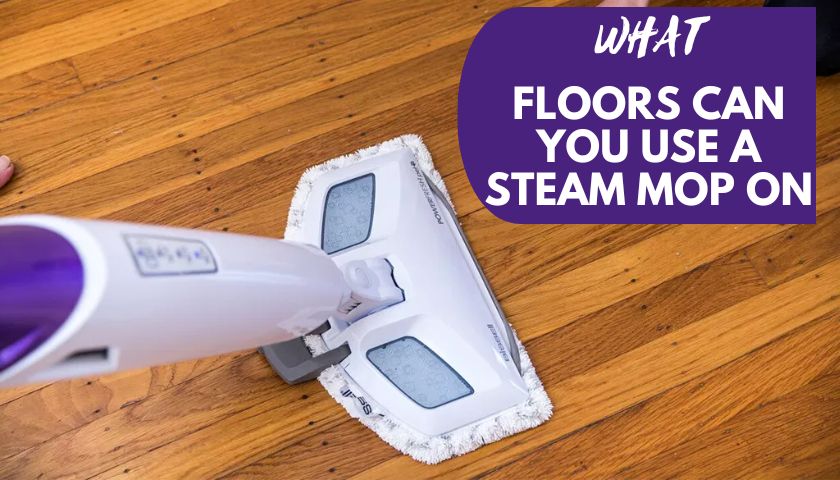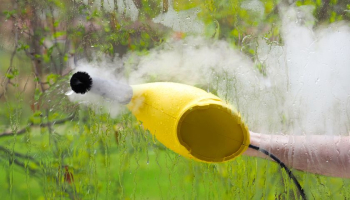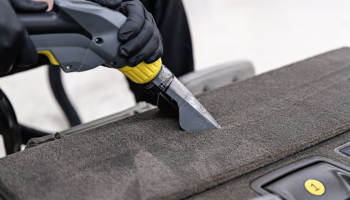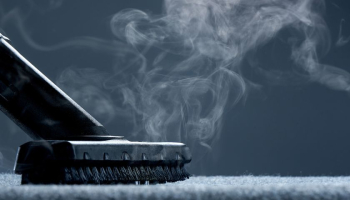What Floors Can You Use a Steam Mop on and What Can’t?

Steam mops apply an excessive amount of steam to the surface of the floor. Thus, you may think that they might damage the floor. So, before buying a new one, the crucial question arises: what floors can you use a steam mop on?
In reality, you can’t use steam mops on all types of floors. You need to be cautious enough to use a steam mop on your floor. For this, knowing what floors are suitable for steam cleaning is important. At the same time, which floors should be avoided?
Contents
What Floors Can You Use a Steam Mop On?
Steam cleaners may be suitable for one type of floor while using them on other floor types can damage the surface. You can use these cleaners for the below floor types.
1. Ceramic Tile
There will be no issue when you steam mop on the tile floor except for unsealed grout or terracotta.
Steam mops are the best way to remove grime and dirt formulated over time. More importantly, when using these mop types, using chemicals becomes unnecessary. Steam gets into the deep layer of dirt and cleans the tile floors within a few seconds.
Now you might wonder how to know whether my tile floor is properly sealed. Follow the below steps,
- Choose an unobtrusive area and place a few drops of water on it. Check if it gets absorbed.
- Next, wipe the water down and wait a few minutes to let the area dry.
- If you see no discoloration, ensure the tile is correctly sealed.
Bathroom mold and cooking grease can easily be eliminated when a steam mop is used on tile floors. In fact, hot steam works as a natural sanitizer, killing 99.99% of bacteria and germs.
2. Carpet
Steam mops are excellent for cleaning carpets and won’t ruin the surface.
More importantly, cleaning the carpet will be effortless if your steam mop comes with vacuum functionality. A steam mop efficiently cleans most carpet dirt with the help of steam.
While using the steam mop on the carpet, you will need to maintain the following factors,
- Vacuum the carpet thoroughly before using the steam mop
- Make sure the “no melted” item is available on the carpet.
- Consider the microfiber cloth before choosing a steam mop for the carpet. The reason is microfiber cloth is the thing that picks the dirt up rather than steaming deeply.
Some steam mops for carpets come with a modifiable microfiber cloth feature. This feature lets you change the towel or cloth in front of the mop attachment according to your preference. It is especially beneficial when you need to remove the dirt from a clean and new carpet.
3. Porcelain Tile
Porcelain tiles are solid and durable, making them ideal for steam cleaning.
You will get an extra-clean tile floor when you combine water with a steam mop. All you need to do is ensure that your tiles are made of porcelain. Some tile designs are similar to porcelain and can be made of other materials.
4. Vinyl Floors
Well, there are controversies. Vinyl floors could be better for stem mopping. But still, you can use steam cleaners on vinyl floors with a few precautions.
Laminate floor panels and vinyl planks are similar to look at, but their construction is different. Plastic is used to manufacture vinyl planks, making them waterproof and scratch-resistant.
Sadly, these floors are less efficient in handling the excessive heat of regular steam mops. The layers of vinyl floors can separate. Moreover, the coating can melt off. Furthermore, vinyl floors can get sticky after steam cleaning.
The good news is that vinyl sheets or tiles can conveniently be cleaned with a steam mop by controlling excessive heat. Steam mop with adjustable settings permits you to apply low steam wherever necessary.
You will also love to know that low steam reduces the risk of damaging laminate boards or floors. So, they can also be used for steam mopping the laminate floors.
What Floors Are Incompatible for Steam Mop?
Steam mops are not recommended to use on the below flooring options. The below floors can permanently damage or lose their warranty if you apply steam to clean them.
1. Solid Hardwood Floors
The planks of hardwood floors are generally made from Cherry, Hickory, Oak, Beech, Maple, Ash, or Walnut trees.
Usually, solid hardwood planks are only commonly used in modern homes. These are available mostly in older homes.
If you use a steam mop on solid hardwood floors, they will crack or may buckle. In addition, the moisture can penetrate the crevices and cracks of the wood, causing rot, swell and even buckle.
2. Engineered Hardwood Floors
Engineered hardwood is an aesthetic wood veneer over an inexpensive wood panel.
They usually mimic the look of solid hardwood floors by slotting together with a grooved joint. These floor types are the most luxurious options nowadays. But the heat of steams mop can damage them easily. Even lower heat can also ruin the luxurious look of the hardwood planks.
So, avoid using a steam mop on hardwood floors.
3. Laminate Floors
You shouldn’t but if there are no other options, use steam mops with minimal heat on laminate floors. These floor types have a plain wood base and a print of decorative wood patterns while coated with plastic.
The protective coating prevents scratches and moisture, protecting the wood grain. Also, a plastic coat covers the upper layer, sealing the planks tightly.
Now, moisture can’t penetrate the crevices, but the heat can damage the plastic upper layer. The Laminated floors can get separated because of the excessive heat of the steam mop. That is why using steam mops on laminate floors is not recommended.
Frequently Asked Questions (FAQs)
Is steam mop safe for all floors?
Not all floors are suitable for steam mopping. Ceramic tile, carpet, porcelain tile, and vinyl floors can easily be cleaned with steam mops.
In comparison, you must avoid steam mopping on solid and engineered hardwood floors. Additionally, precautions like applying low heat are needed to use a steam mop on laminate floors.
Is steaming better than traditional mopping?
Steam mop heads absorb the grime and dirt while killing the bacteria by applying a heated stem on the floor surface. Steaming is a faster and an effective cleaning option than traditional mopping.
Where does the dirt go when you steam clean?
In fact, the dirt doesn’t go anywhere. Steam mop releases heat and vapor that cleans the unwanted stains, grease, and grime.
Does a steam mop damage the floor?
When you use a steam mop, damage may appear on the solid and engineered hardwood laminate floors. Negative effects differ from material to material. Some floors get discolored, while warm, cracked, or cupping may appear on others.
Does steam mopping really clean?
One of the best features of steam mopping is it effectively cleans the dirt without sacrificing the cleaning efficiency. This mop kills 99.99% of bacteria and germs, leaving an eco-friendly and safe floor.
Final Words
So, now you know what floors you can use a steam mop on? When steam mopping your floor, it is always best to check whether the floor type is compatible.
At the same time, before buying a steam mop, consult with the floor manufacturer first. It is better to avoid damaging the floor by learning the compatibility beforehand. Thus, you can avoid expensive repairs. Moreover, the investment in a steam mop and floor will be worth the price.






![How to Attach a Swiffer Wet Pad? [Learn to Do It Correctly]](https://mopsreview.com/wp-content/uploads/thumbs_dir/How-to-Attach-Swiffer-Wet-Pad-20ohih1eaj9c1n0speeheg51u8ulaobz5p513g7q9y90.jpg)

